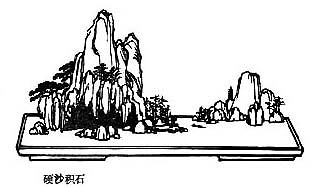Sun Zi 
 – The Art of War
– The Art of War
Chinese strategy explained : know yourself and the ennemy, use deception, spies, and "win with ease". Tr. Giles (en, annotated) and Amiot (fr).
Waging War
Ts`ao Kung has the note: "He who wishes to fight must first count the cost," which prepares us for the discovery that the subject of the chapter is not what we might expect from the title, but is primarily a consideration of ways and means.
Sunzi II. 1.
Sun Tzu said: In the operations of war, where there are in the field a thousand swift chariots, as many heavy chariots, and a hundred thousand mail-clad soldiers,1 with provisions enough to carry them a thousand li,2 the expenditure at home and at the front, including entertainment of guests, small items such as glue and paint, and sums spent on chariots and armor, will reach the total of a thousand ounces of silver per day. Such is the cost of raising an army of 100,000 men.
Giles II.1.
Sun Tzu dit : Je suppose que vous commencez la campagne avec une armée de cent mille hommes, que vous êtes suffisamment pourvu des munitions de guerre et de bouche, que vous avez deux mille chariots, dont mille sont pour la course, et les autres uniquement pour le transport ; que jusqu'à cent lieues de vous, il y aura partout des vivres pour l'entretien de votre armée ; que vous faites transporter avec soin tout ce qui peut servir au raccommodage des armes et des chariots ; que les artisans et les autres qui ne sont pas du corps des soldats vous ont déjà précédé ou marchent séparément à votre suite ; que toutes les choses qui servent pour des usages étrangers, comme celles qui sont purement pour la guerre, sont toujours à couvert des injures de l'air et à l'abri des accidents fâcheux qui peuvent arriver. Je suppose encore que vous avez mille onces d'argent à distribuer aux troupes chaque jour, et que leur solde est toujours payée à temps avec la plus rigoureuse exactitude. Dans ce cas, vous pouvez aller droit à l'ennemi. L'attaquer et le vaincre seront pour vous une même chose.
Amiot

The Art of War – Sun Zi II. 1. – Chinese off/on – Français/English
Alias Sun Tzu, Sun Wu, Sun Tse, Sunzi Bingfa, Souen Tseu, Souen Wou, 孫武.
The Book of Odes, The Analects, Great Learning, Doctrine of the Mean, Three-characters book, The Book of Changes, The Way and its Power, 300 Tang Poems, The Art of War, Thirty-Six Strategies
Welcome, help, notes, introduction, table.
Index – Contact – Top
